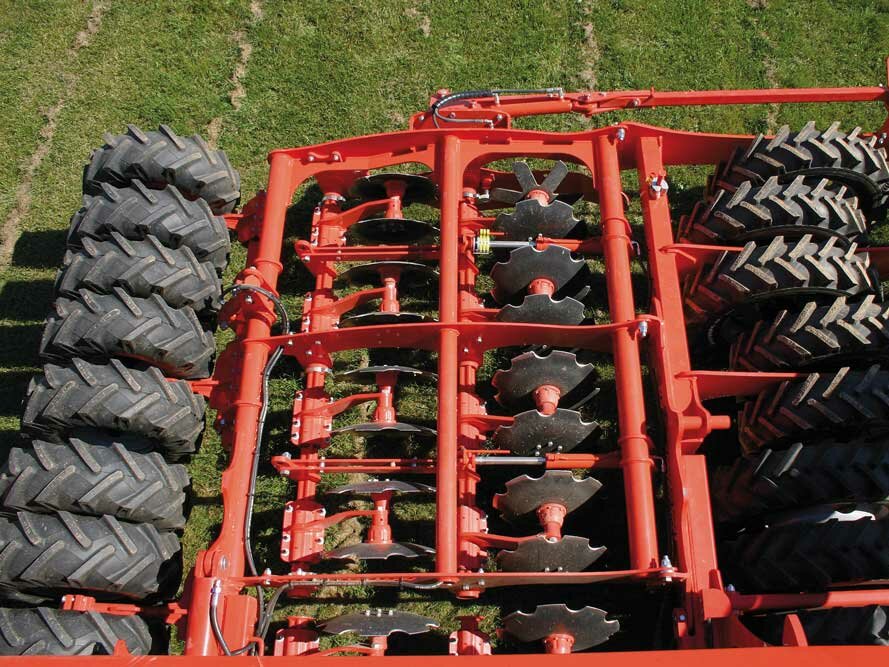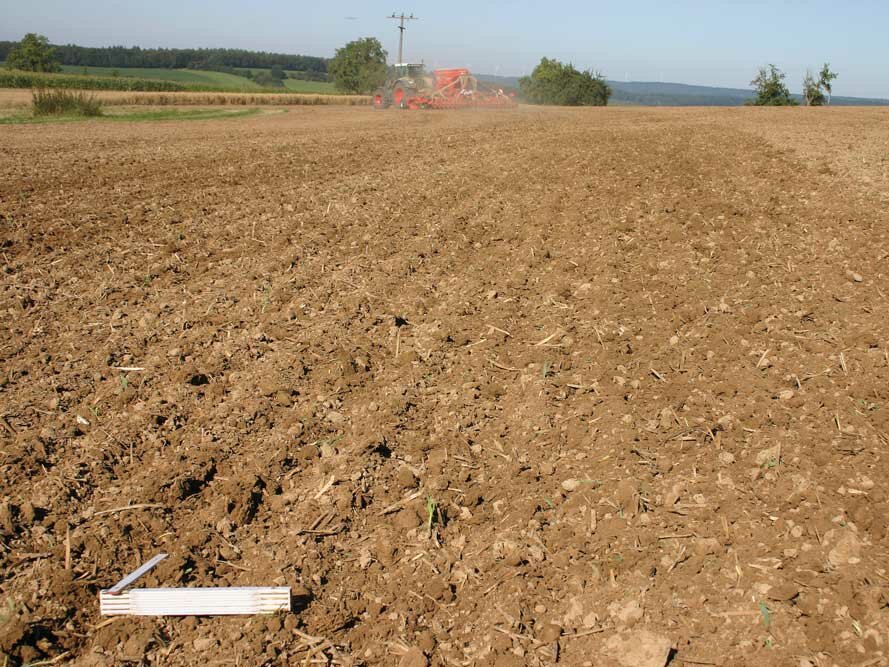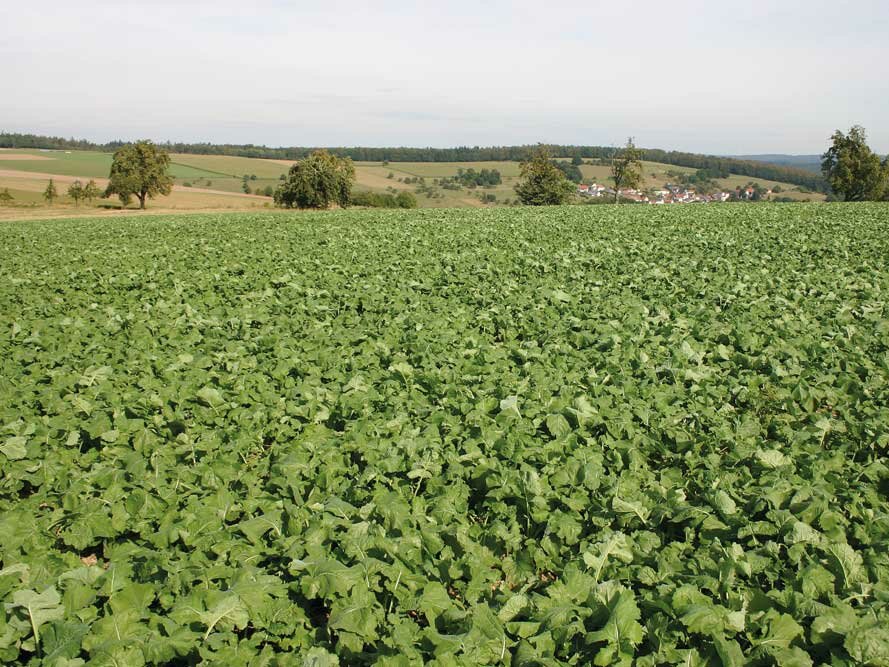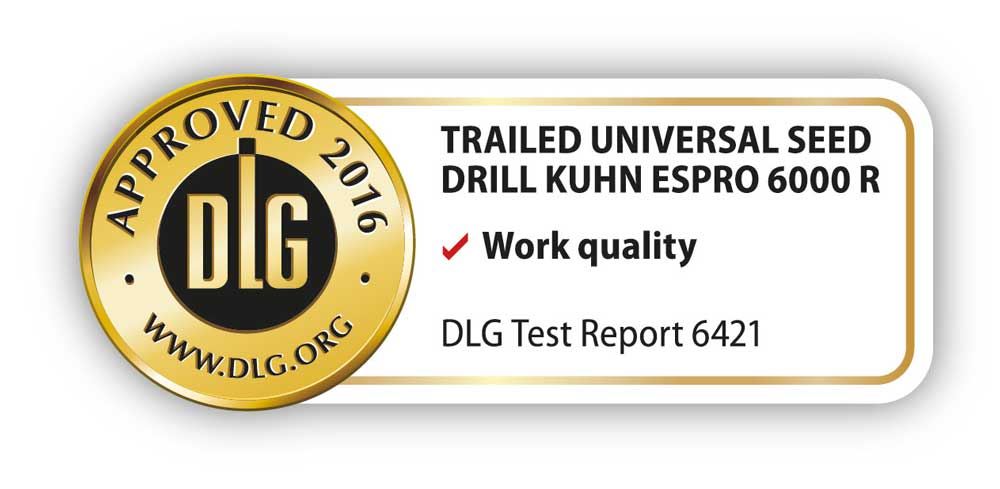Kuhn Universal seed drill Espro 6000 R: Precisely drilled
By Georg Horst Schuchmann, DLG Test Center Technology and Farm Inputs
Compact disc harrows, tyre packer and seed drill with 6 m working width and 40 disc coulter rows plus a 3,500 l seed hopper capacity are features of the new flagship of Kuhn sowing technology, the trailed Kuhn universal seed drill Espro 6000 R. This was tested for the DLG Approved label in the criterium »work quality«. Promised by the manufacturer for its new Espro is high area performance with comparatively low draught requirement. Machine application is visualised for conventional sowing onto ploughed land, for mulch sowing and also for direct drilling into stubble. But just how accurately does the machine work in theory and practice? The DLG testing commission prepared the conditions under which these questions can be answered exactly through a typical test programme for DLG Approved labelling in the criterion »work quality« under controlled laboratory conditions as well as those of practical field work. The test remit included seed metering accuracy and lateral distribution under laboratory conditions as well as seed metering accuracy, crop emergence and longitudinal plant distribution with oilseed rape and wheat and seed placement depth with wheat.
Laboratory tests
In the laboratory the drill was mounted in various positions and seed metering precision and lateral distribution performance determined with rapeseed, barley and wheat. Thereby, the drill was operated at two driving speeds (10 km/h and 14 km/h). The two measurement values were determined with rapeseed and barley seed and the drill in a horizontal position. With wheat seed, the laboratory test additionally simulated drilling on sloping surfaces with testing on 20 % slopes to the left and right as well as to the front and rear. In the test, metering accuracy achieved by the Kuhn Espro 6000 R in all the test stand variations with all three crop seed types a maximum deviation of 1.1 %. Such results earn the DLG testing commission assessment grid evaluation of consistently »very low«, representing the best possible assessment level.
During determination of seed distribution accuracy transversely to direction of travel (lateral distribution) on the test stand, the difference between the amounts of seed deposited from individual coulters and the average for all the coulters was measured. A value for this is the so-called coefficient of variation (CV). The lower the CV in this case, the more uniform is the delivered amount of seed across the drill working width. With values of 2.7 %, the CV for rapeseed drilled on a level surface at both speeds was very low, achieving a »very good« evaluation in the DLG assessment. For wheat drilled on the level, the evaluation was 2.8 % at 10 km/h and 3.1 % at 14 km/h, assessed as »good«. Achieved for wheat drilled on the slopes and for barley drilled on level ground were CV values between 2.7 % and 4.2 %, i.e. between »good« and »satisfactory« according to the DLG testing commission assessment grid.
Preparation for field work
Before the field work started, the first thing the operator must do is adjust disc harrow working depth by inserting or withdrawing so-called distance clips on two hydraulic cylinders. Because both hydraulic cylinders are situated only about 50 cm within the machine when the track markers are unfolded, these adjustment points are easily accessible so that the operator need not step inside the disc harrow frame to adjust working depth. Additionally, a calibration test is carried out and this is also achievable with ease: Firstly, crop type and sowing rate are entered at the terminal. The computer then gives a suggested opening width for the metering unit, to be set manually. Next, the operator activates the metering unit briefly so that the individual cells are filled with seed. The calibration procedure can then begin. The collected seed is then weighed – for this purpose Kuhn supplies a collection sack and spring scale. Based on the weight of seed collected, the on-board computer calculates the correct rpm for the metering unit cell wheel, itself driven by an electric motor independently of tractor and drill speed. Thanks to the well-situated lighting kit, all adjustments as well as calibration can be carried out during nighttime too.
Practical test in the field
The field test with winter oilseed rape took place on a slightly sloping surface with fine-crumbed seed bed. Soil quality averaged 40 points under the German system. Preparatory cultivation details are summarised in the test report. Photo 2 illustrates the field surface after rapeseed drilling. In the practical test the Kuhn Espro 6000 R achieved very low deviations between calibration test and seed quantity actually drilled. Four weeks after drilling the emerged plants were counted (see photo 3). Recorded thereby was a good plant emergence of 87%, as well as a very good longitudinal distribution of plants. With wheat too, a very good metering accuracy and a very good crop emergence (92%) were confirmed. The longitudinal distribution of the plants in the field were evaluated as »good« in this case.
The DLG test for seed drills in the criterion work quality includes:
- Seed metering accuracy and lateral distribution in laboratory
- Metering accuracy, crop emergence, longitudinal distribution of plants and seed depth placement accuracy in the field
- Find the detailed test report on: https://www.dlg.org/en/agriculture/tests/query-for-test-reports/#!/1?filter=Kuhn%20Espro&locale=en







